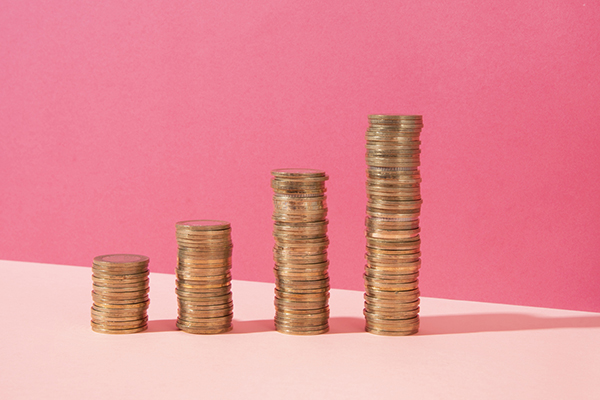10 things you might not know about your pension
Rachel Lacey unravels some of the key features about pensions and explains the benefits of getting a firm grasp of how the tax wrapper works.
29th October 2025 14:03
by Rachel Lacey from interactive investor

Pensions are not the easiest products to get your head around. There’s lots of jargon and the rules – which are complicated enough – are subject to frequent change.
It’s hardly surprising then that research from the Money and Pensions Service (MPaS) found that nearly 17 million people are confused by pensions.
- Invest with ii: What is a SIPP? | Is a SIPP right for me? | SIPP Cashback Offers
However, when it comes to building yourself a decent income in retirement, they can’t be rivalled. Other investment plans that don’t offer the same incentives to save, pale in comparison.
You certainly don’t need to become an expert in pension rules, but if you want to maximise your savings and reduce your tax bill, it pays to familiarise yourself with the basics.
So, to help you gen up, here’s 10 things you might not know.
1) You’ll get tax relief on your contributions...
Research from HMRC has found that only four in 10 savers know that the government tops up pension contributions using tax relief.
Tax relief is there to encourage us to save for retirement and it does that by effectively refunding the tax you’ve paid on your contributions. This means it costs a basic-rate taxpayer just £80 to invest £100, while higher and additional rate taxpayers only need to pay £60 and £55 to save the same amount.
2) …but you might not get the full rate automatically
If you’re a higher or additional rate taxpayer, it’s important to be aware that you might not be getting the full rate of tax relief you’re entitled to.
According to a report in Pensions Age earlier this year, as many as 2.3 million savers could be missing out.
How tax relief is applied depends on your scheme. For example, if it’s a personal pension, like a self-invested personal pension (SIPP), that you arranged yourself, your pension provider can only claim basic-rate tax relief (20%) on your behalf. So, if you pay a higher rate, you’ll need to claim the further 20% or 25% you’re owed by completing a tax return or using HMRC’s new online claims service.
You can then use that money to reduce your tax bill or request a refund, which you can spend as you wish or reinvest into your pension.
This approach is referred to as “relief at source”, with pension contributions made after your income has been taxed.
With workplace pensions, it’s a bit more complicated. Some will operate on the same basis as personal pensions, but others will use a “net pay” approach, where your pension contribution is deducted before your income is taxed. This means you’ll get the full rate of tax relief immediately, without the need to claim.
Failing to claim tax relief you’re owed is an expensive mistake, so if you’re not sure how your scheme works, check.
A higher-rate taxpayer, for example, who paid £10,000 into their SIPP would miss out on tax relief worth £2,500 if they didn’t submit a claim.
The good news is that you can backdate claims of higher-rate pension tax relief by up to four years.
- Are you missing out on a lucrative workplace pension perk?
- How DB to DC pension shift is impacting workers’ retirements
3) Caught out by the annual allowance? You might be able to contribute more...
Each year you can pay 100% of your earnings (up to £60,000) into pensions and get tax relief on contributions. That’s enough for most people, but it can restrict saving for higher earners, the self-employed (who have fluctuating income) and those who want to pay lump sums like inheritances into their pensions.
However, if you have any unused allowance from the previous three tax years, you might be able to use it this year by taking advantage of carry forward rules – note the 100% of earnings rule still applies.
4) ...but, if you’ve dipped into your pension, you might have a lower allowance
Pension rules let you access your pension from age 55 (57 from 2028). That can really add flexibility to your mid-life finances, but it’s essential you’re aware that once you’ve made a taxable and flexible withdrawal from a pot worth over £10,000, you’ll trigger the money purchase annual allowance (MPAA). This will see the maximum amount you can pay into pensions fall from £60,000 a year to just £10,000.
- Six things to know about volatile markets and your pension
- Is it possible to give away my pension savings to avoid IHT?
5) Non-tax payers can still pay into pensions
Tax relief on pensions isn’t limited to those who are working and paying tax. Non-earners can pay up to £2,880 into pensions each year, which will be boosted to £3,600 once basic-rate tax relief has been added.
It’s also possible for other people to pay into a pension on your behalf, such as spouse or partner – a helpful way to ensure each individual within a couple has some pension provision, if one doesn’t work.

6) Increasing pension contributions can help you avoid the 60% tax trap...
As soon as your income hits £100,000, your tax-free personal allowance will start being withdrawn at a rate of £1 for every £2 you earn over the threshold. That means earnings between £100,000 and £125,140 (at which point the personal allowance is fully removed and additional-rate tax kicks in) will be taxed at an effective rate of 60%.
However, as the calculation is based on your income after pension contributions have been made, it’s possible to swerve the tax hit by paying more into your retirement pot.
7) …and keep valuable childcare benefits
In addition to contending with the 60% tax trap, working parents will be hit with a further sting when their income reaches six-figures. At £100,000, they will also lose the right to tax-free childcare and 30 hours free childcare for children aged nine months to four years.
However, once again, it’s possible to avoid this cliff-edge and regain these benefits by paying enough into your pension to bring your taxable income below £100,000.
8) You might not be paying as much into your pension as you think
Auto-enrolment rules stipulate the minimum that you and your employer must pay into your workplace pension (currently 8%).
But this figure can be misleading. That’s because employers are only required to base calculations on your “qualifying earnings” – the range between £6,240 and £50,270 – not your whole salary. As such, a worker earning £100,000 could be paying the same into their pension as someone earning roughly half that amount.
Some employers will pay above the minimum requirement and base contributions on your full salary. If you’re not sure what you’re getting, check with your employer.
It’s also worth noting that that minimum contributions are just that. If you can pay in more, you should.
9) Time does the hard work for you
You’d be forgiven for thinking that you’re the biggest contributor to your pension. However, over your working life, it’s likely to be investment growth.
Take the (simplistic) example of someone paying a total of £500 a month into a pension for 30 years. They’ll end up with a total £416,129 - with £180,000 coming from contributions and more than £236,000 from investment growth (assuming 5% growth a year).
However, if they started saving, say, 15 years later and ramped up their contribution to £1,000 a month, they would still have invested £180,000, but would only have £267,289 to show for it.
The figures show that the sooner you start saving for retirement, the more you start to benefit from the compounding of returns over time, and the less you’ll need to invest overall.
- Sign up to our free newsletter for investment ideas, latest news and award-winning analysis
- Self-employed pensions: how I’m using a SIPP for my retirement
10) You can take charge of your pension – if you want
Most workplace pension savers pay into the scheme’s default investment fund. This isn’t necessarily a bad decision, but if you aren’t happy with it, you can normally choose something else. That might be an ethical fund, for example, or a punchier option that strives for higher growth.
If you’ve got a handful of pensions from previous jobs, all with different providers, you may also be able to simplify your retirement saving by consolidating them into one pot, such as a standalone SIPP.
In addition to giving you more control over your retirement savings, you can often save money as well, if the new scheme has lower running costs. However, it’s important to check you won’t lose any valuable benefits before you switch.
These articles are provided for information purposes only. Occasionally, an opinion about whether to buy or sell a specific investment may be provided by third parties. The content is not intended to be a personal recommendation to buy or sell any financial instrument or product, or to adopt any investment strategy as it is not provided based on an assessment of your investing knowledge and experience, your financial situation or your investment objectives. The value of your investments, and the income derived from them, may go down as well as up. You may not get back all the money that you invest. The investments referred to in this article may not be suitable for all investors, and if in doubt, an investor should seek advice from a qualified investment adviser.
Full performance can be found on the company or index summary page on the interactive investor website. Simply click on the company's or index name highlighted in the article.
Important information – SIPPs are aimed at people happy to make their own investment decisions. Investment value can go up or down and you could get back less than you invest. You can normally only access the money from age 55 (57 from 2028). We recommend seeking advice from a suitably qualified financial adviser before making any decisions. Pension and tax rules depend on your circumstances and may change in future.